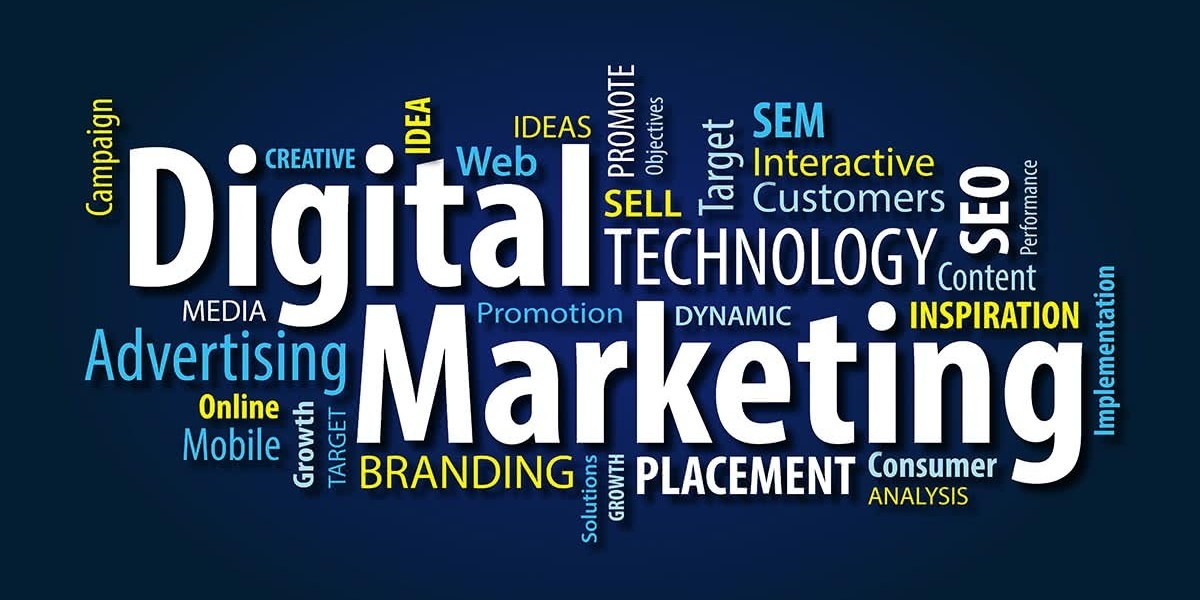What is Digital Marketing?
Digital marketing refers to the use of online platforms, technologies, and strategies to promote products or services and connect with a target audience. It encompasses a wide range of marketing tactics, from search engine optimization (SEO) and social media marketing to email campaigns and online advertising. The core objective of digital marketing is to reach customers where they are spending the majority of their time—online—and drive traffic, engagement, and conversions.
Why is Digital Marketing Important?
Digital marketing is no longer optional for businesses. Here are several reasons why it’s essential:
Wide Reach and Global Audience: The internet connects billions of people worldwide, providing an unparalleled opportunity to reach a global audience.
Cost-Effective: Compared to traditional marketing methods, digital marketing offers more affordable options for businesses of all sizes, particularly through social media, email marketing, and SEO.
Targeted Marketing: Digital marketing allows you to target specific demographics, interests, and behaviors, ensuring that your message reaches the right audience.
Measurable Results: Digital marketing campaigns can be tracked in real-time, offering insights into performance, ROI, and areas for improvement.
Increased Customer Engagement: Platforms like social media, blogs, and email allow for continuous interaction with customers, fostering loyalty and long-term relationships.
Types of Digital Marketing
There are various digital marketing techniques, each with its own strengths and applications. Here’s a breakdown of the most popular types:
1. Search Engine Optimization (SEO)
SEO is the process of optimizing your website to rank higher in search engine results pages (SERPs) for relevant keywords. Higher rankings increase organic traffic to your website, driving more potential customers.
Key elements of SEO:
- On-Page SEO: Optimizing individual web pages with relevant keywords, engaging content, and proper formatting.
- Off-Page SEO: Building backlinks from reputable websites to increase domain authority and search engine rankings.
- Technical SEO: Ensuring your website is technically sound, with fast load times, mobile optimization, and secure browsing (HTTPS).
2. Content Marketing
Content marketing focuses on creating valuable, informative, and engaging content to attract and retain customers. Content can include blog posts, articles, videos, infographics, and podcasts.
Key strategies:
- Quality Content: Create content that educates, entertains, or solves problems for your target audience.
- Blogging: Regularly post informative articles to drive organic traffic and establish authority in your industry.
- Video Content: Use video to engage and connect with your audience on platforms like YouTube or social media.
3. Social Media Marketing
Social media marketing involves using platforms like Facebook, Instagram, Twitter, LinkedIn, and TikTok to promote your brand and engage with your audience.
Key strategies:
- Paid Ads: Utilize paid social media campaigns to target specific demographics and increase reach.
- Organic Posts: Share valuable content that resonates with your audience and encourages interaction.
- Influencer Marketing: Partner with influencers to promote your products or services to a larger audience.
4. Pay-Per-Click Advertising (PPC)
PPC advertising involves paying for ads that appear on search engines (like Google Ads) or social media platforms. You pay each time someone clicks on your ad.
Key platforms:
- Google Ads: Ads that appear on Google’s search results pages and across the Google Display Network.
- Facebook Ads: Sponsored posts on Facebook and Instagram that appear in users' feeds.
- LinkedIn Ads: Ads that target professionals based on job titles, industries, and interests.
5. Email Marketing
Email marketing involves sending targeted emails to nurture leads, promote offers, or keep your audience engaged. It’s one of the most effective ways to drive conversions and maintain long-term customer relationships.
Key tactics:
- Newsletter Campaigns: Regular email updates with valuable content, promotions, and company news.
- Transactional Emails: Personalized emails triggered by user actions, such as order confirmations or account sign-ups.
- Segmentation: Categorizing your email list to send tailored messages based on user interests or behaviors.
6. Affiliate Marketing
Affiliate marketing allows businesses to partner with affiliates (partners or influencers) who promote their products in exchange for a commission on sales. It’s a cost-effective way to expand your reach without upfront costs.
Key strategies:
- Choose Quality Affiliates: Partner with influencers or content creators whose audience aligns with your target market.
- Clear Commission Structure: Establish a clear commission structure to motivate affiliates and keep them engaged.
7. Influencer Marketing
Influencer marketing involves partnering with individuals who have a large and engaged following on social media or blogs. These influencers promote your brand, product, or service to their audience, driving awareness and sales.
Key benefits:
- Expanded Reach: Influencers help you access a wider and more engaged audience.
- Authenticity: Influencers can provide social proof, making your brand more trustworthy.
Building a Successful Digital Marketing Strategy
Creating a successful digital marketing strategy requires careful planning and execution. Follow these key steps:
1. Define Your Goals
Start by defining clear and measurable objectives for your digital marketing efforts. These could include increasing website traffic, generating leads, boosting sales, or improving brand awareness.
2. Understand Your Target Audience
Identify your ideal customer profile by considering factors such as demographics, interests, location, and pain points. This will help you tailor your marketing efforts to resonate with the right audience.
3. Choose the Right Channels
Not all digital marketing channels will be suitable for your business. Choose the platforms that align with your goals and where your target audience is most active.
4. Create Compelling Content
Whether it's a blog post, social media update, or video, content should be valuable, relevant, and engaging. Provide solutions to your audience's problems and ensure that your content supports your overall marketing objectives.
5. Measure and Analyze Results
Track key performance indicators (KPIs) to evaluate the effectiveness of your digital marketing campaigns. Use tools like Google Analytics, social media insights, and email marketing reports to monitor progress and adjust strategies as needed.
Conclusion
Digital Marketing is an ever-evolving field, offering businesses a wealth of opportunities to connect with their audience and achieve measurable results. By understanding the various digital marketing strategies—SEO, content marketing, social media, PPC, email marketing, and more—you can create a comprehensive and effective marketing plan that drives growth.
Successful digital marketing requires continuous learning, adaptation, and optimization. Stay up-to-date with industry trends, test different strategies, and focus on creating meaningful connections with your audience. With the right approach, your brand can thrive in the competitive online landscape, attract new customers, and build long-term success.










